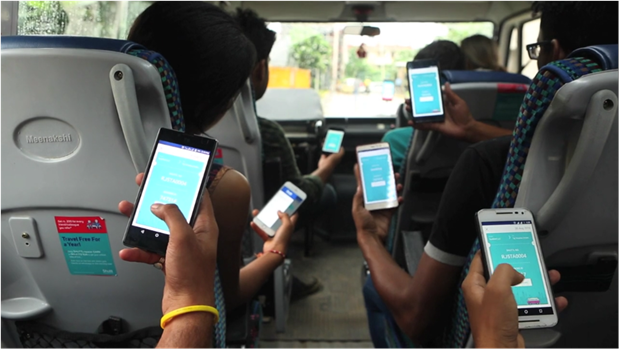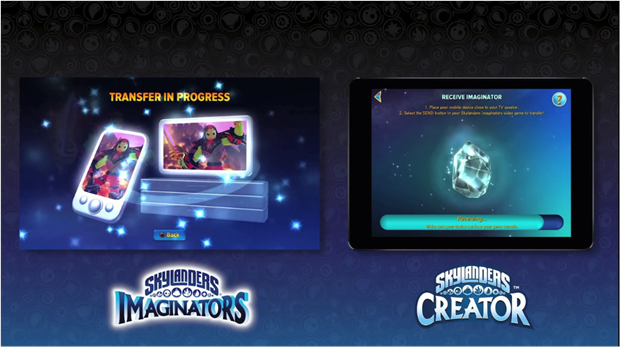The Internet of Things has been hailed as a game changing innovation within technology and manufacturing, with some even hailing IoT as standing at the forefront of the fourth industrial revolution. However, if there's one current limitation to IoT, it's the fact that we still live in a world where many of the devices we use on a daily basis are offline.
One approach to overcoming this is currently being pioneered by Chirp, whose work with data-over-audio technologies allows devices to transfer information in the form of a series of notes and pitches that can be received and translated even when a device is in offline mode. Virtually any device with a speaker or microphone can use Chirp, from modern robots and smartphones to legacy industrial equipment.
After being developed by a team of experts in acoustics and communication at University College London, Chirp was initially marketed in the form of an iOS and Android peer-to-peer app, which enabled users to transfer videos, photos, MP3s and other content between devices. It has since been developed into a suite of Software Development Kits (SDKs) suitable for a much wider variety of platforms, transitioning a relatively simple B2C proposition into a global B2B research and technology house.
"The interesting thing about sound is how ubiquitous it is" explains Chirp's Chief Technology Officer James Nesfield. "We think this is key to the Internet of Things, because sound is uniquely able to access the millions of devices that are currently in our shared environment but are currently unable to join the IoT revolution. Data-over-audio is one of the few technologies that can enable interactions between legacy equipment - such as sending a message from a vinyl record playing on your grandfather’s old record player to your latest iPhone 7. This allows unique experiences to be created around that communication. Almost any device that has a speaker and/or a microphone can be part of the Internet of Sound - and it's that ubiquity in the physical world which makes it a great match for the Internet of Things."
In one example of the practical applications of Chirp, Indian minibus and taxi service SHUTTL has adopted the technology to allow passengers to quickly validate their tickets on boarding. Previous solutions such as manual validation and scanning QR codes were causing a backlog during peak times - with QR codes often causing problems when illumination was poor. With Chirp, the passenger can validate their ticket at the touch of a button, sending data to the driver's device more or less instantly.
Another successful partnership has been with the US games developer Activision, who have incorporated Chirp technology into their multi-platform 'Skylanders Imaginators' game. The primary audience for the game is young children, which brought in a number of potential issues surrounding security, internet access and account ID/username mechanics. Using Chirp technology, players could customise their characters and share them with friends through their tablets directly from the game without having to physically connect their devices, connect to the wider internet or login to an account.
"We did a lot of customisation for that project" explains Nesfield. "We offer a standard protocol that's able to send 50 bits of data per transmission. For larger partners like Activision, we offer bespoke audio protocols for a package that best suits their needs. Skylanders required a protocol that allowed the user to send around 20 times more data than our standard product, purely through sound. Even if the devices are offline or in airplane mode, the character can be transferred. It was a really satisfying project to work on, because it turned out to be a great fit for their technology and business needs."
With powerful error correction and an ultrasound option available, Chirp demonstrates that Internet of Sound can be used in a wide variety of environments, even areas with high levels of background noise or in situations in which audible data transfer would not be appropriate.
"This was a big challenge during development" explains Nesfield. "Data over sound as a concept isn't new - it was widely used in old modems and phone lines. The difficulty with Chirp was that we're specifically optimising for the noisy, messy and chaotic real world. It's one thing having an algorithm in a quiet lab environment, but the technology needs to be just as effective when you're on the street and an ambulance goes past or at home with the TV blaring. There's also the question of acoustics - there's a significant difference between playing an audio in your living room and playing it in a cathedral or a train station, and we had to ensure that our technology was able to compensate for that."
Another important consideration was the security concerns of transferring data over audio. "Theoretically, any device within earshot can hear the data and decode it" says Nesfield. "How security gets looped into that is up to the third party. What we tend to see is a mechanic by which both device A and B agree on what data needs to be sent at any one time, and if any other device overhears that data, it's simply meaningless. This is why we offer bespoke protocols, so that only specific devices have the ability to decode the message."
Looking to the future, Chirp are actively working to expand their range of SDKs to offer native support to a wider variety of platforms, with a broadening product portfolio allowing for expansion into different verticals. They already offer an SDK for Arduino and Python, in addition to iOS, Mac OS and Android among others, meaning most IoT devices can now interact with IoS technology.
"We're really pleased that we're beginning to see Chirp applied across a wide variety of sectors" says Nesfield. "We purposefully keep the SDKs very flexible; they're not optimised specifically for any one sector. This really works in our favour in terms of being able to take advantage of opportunities that come from any direction. Often, these applications come from areas that we'd never even considered before."
Are you aware of any applications or common problems that could potentially be solved by Internet of Sound technology? Have you incorporated data over audio into one of your projects? Let us know your thoughts in the comments section below...


Top Comments
-

jlucas
-
Cancel
-
Vote Up
0
Vote Down
-
-
Sign in to reply
-
More
-
Cancel
Comment-

jlucas
-
Cancel
-
Vote Up
0
Vote Down
-
-
Sign in to reply
-
More
-
Cancel
Children